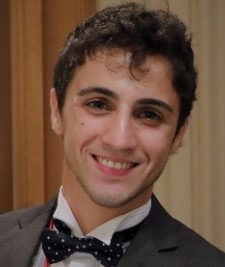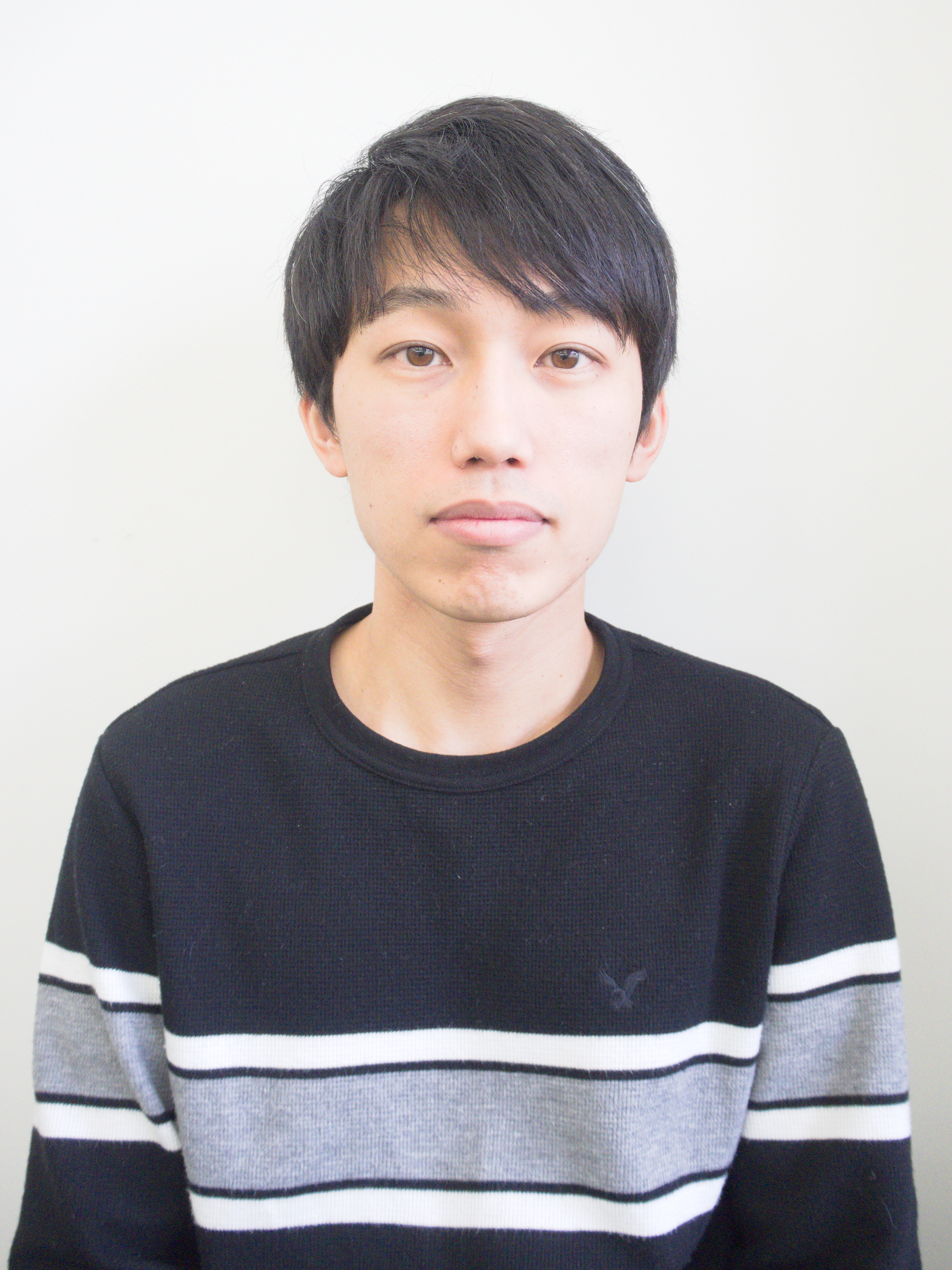Member
Professor
Researcher
Major Cooperation with Foreign Institutes
Past Members
Profile
Adjunct Professor, Department of Mechanical Engineering and Materials Science, University of Pittsburgh (September 2016 -)
I study the mathematical theory of the compressible, and incompressible viscous fluid flows. Recently, I proved the maximal regularity theorem for the several linear problems arising from the mathematical study of the free boundary problems for the Navier-Stokes equations describing the motion of viscous compressible, or incompressible one phase or two phase fluid flows with the help of the R boundedness for the solution operators of the resolvent problem. Moreover, I proved the local wellposedness of the free boundary problem for the one phase compressible, or incompressible viscous fluid flow. And also, showing the decay properties of solutions to the linearized problems, I proved the global wellposedness for small initial data. I also started studying the two phase problems in the case of the incompressible-incompressible, incompressible-compressible and compressible-compressible fluid flows with sharp interface.
- (1) Y. Shibata, R Boundedness, Maximal Regularity and Free Boundary Problems for the Navier-Stokes Equations, Chapter 3 in Mathematical Analysis of the Navier-Stokes Equations, G. P. Galdi and Y. Shibata (Eds), C.I.M.E. Foundation Subseries @2020, Springer.
- (2) Y. Shibata and H. Saito, Global Well-posedness for Incompressible-Incompressible Two Phase Problem, Chapter 3 in Fluids Under Pressure, T. Bodner, G. P. Galdi and S.Nacasova (Eds), Advances in Mathematical Fluid Mechanics@2020, Birkhauser
- (3) M. Schonbeck and Y. Shibata, Global well-posedness and decay for a Q tensor model of Incompressible Nematic Liquid Cristals in RN, J. Differential Equations, 266 (2019), 3034-3065
- (4) T. Piasecki, Y. Shibata and E. Zatorska, On the isothermal compressible multi-component mixture flow: The local existence and maximal Lp-Lq regularity of solutions, Nonlinear Analysis, 189 (2019), 111571
- (5) T. Eiter, M. Kyed and Y. Shibata, On periodic solutions for one-phase and two-phase problems of the Navier-Stokes equations, arXiv:1909.13558v1 [math.P] 30 Sep 2019, submitted to JEE
We study nonlinear partial differential equations arising in the theory of classical fields on the basis of functional analysis and harmonic analysis.
- (1) Long range scattering for nonlinear Schrödinger equations in one space dimension, Commun. Math. Phys., 139(1991), 479-493.
- (2) Exact blow-up solutions to the Cauchy problem for the Davey-Stewartson systems, Proc. Royal Soc. London, A 436(1992), 345-349.
- (3) (with J. Ginibre) Long-range scattering for nonlinear Schrödinger and Hartree equations in space dimension n≥2, Commun. Math. Phys., 151(1993), 619-645.
- (4) (with S. Machihara, M. Nakamura, K. Nakanishi) Endpoint Strichartz estimates and global solutions for the nonlinear Dirac equation, J. Funct. Anal., 219 (2005), 1-20.
- (5) (with S. Katayama and H. Sunagawa) A note on the null condition for quadratic nonlinear Klein-Gordon systems in two space dimensions, Commun. Pure Appl. Math., 65(2012), 1285-1302.
- We will study various nonlinear partial differential equations arising in mathematical physics by functional analytic methods.
- We will study various inequalities in the framework of equalities.
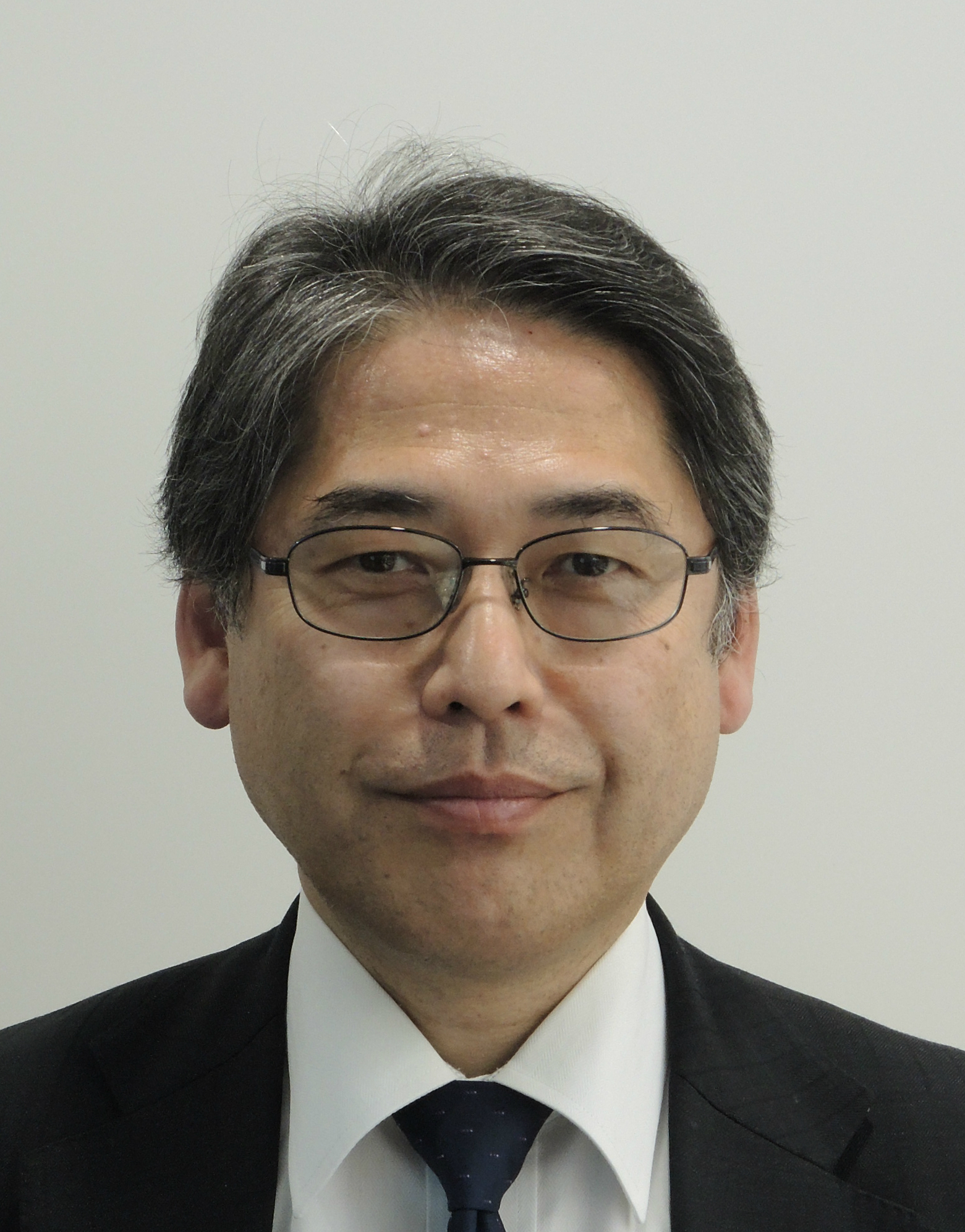
My major is research on nonlinear partial differential equations arising from the fluid dynamics. The method is based on the functional analysis, the harmonic analysis and other fundamental tools in the modern mathematical analysis. In particular, I am interested in the Navier-Stokes equations describing the motion of incompressible fluids and its well-posedness such as existence, uniqueness and regularity of solution as well as its continuous dependence with respect to the initial data. The stability and asymptotic behavior in the space and time variables of solutions are also investigated. Simultaneously, I deal with various inequalities in function spaces which are useful to analysis for the nonlinear PDE.
- (1) Kozono, H., On a decay property of weak solution for semilinear evolution equation of parabolic type and its applications, Math. Z. 196 (1987), 21-38.
- (2) Kozono, H., Taniuchi, Y., Bilinear estimates in BMO and the Navier-Stokes equations, Math. Z. 235 (2000), 173-194.
- (3) Farwig. R., Kozono, H., Sohr, H., An Lq-approach to Stokes and Navirer-Stokes equations in general domains. Acta Math. 195 (2005), 21-53.
- (4) Kozono, H., Yanagisawa, T., Lr-variational inequality for vector fields and the Helmholtz-Weyl decomposition in bounded domains, Indiana Univ. Math. J. 58 (2009), 1853-1920.
- (5) Kozono, H., Ushikoshi, E., Hadamard variational formula for the Green function of the boundary value problem on the Stokes equations, Arch. Rational Mech. Anal. 208 (2013), 1005-1055.
- Construction of decomposition of Lr-vector fields in exterior domains
(i) Lr-Helomholtz-Weyl decomposition
(ii) Application to the stationary Navier-Stokes equations - Harmonic analysis and singular limit
analysis for stability of the fluid motion in unbounded domains
Verified numerical computations figure out all errors that occur in numerical calculation and derive a mathematically correct result. We have established a research field of (super) fast verification, which guarantees the error with almost the same speed as getting a numerical solution. Fast and high-accuracy computation methods are based on Error-free transformation that adaptively increases the accuracy of numerical computation. These computation methods open up the new field of numerical computations. My current interests are studies and educational methods for the circuit theory.
- (1) T. Ogita, S. M. Rump, S. Oishi: Accurate Sum and Dot Product, SIAM Journal on Scientific Computing, 26:6 (2005), 1955-1988.
- (2) S. M. Rump, T. Ogita, S. Oishi: Accurate Floating-Point Summation Part I: Faithful Rounding, SIAM Journal on Scientific Computing, 31:1 (2008) 189-224.
- (3) S. Oishi, S. M. Rump: Fast verification of solutions of matrix equations, Numer. Math. 90 (4) (2002), 755-773.
- (4) S. Oishi: Fast enclosure of Matrix Eigenvalues and Singular Values via Rounding Mode Controlled Computation, Linear Algebra and its Applications, 324 (2001), 134-146.
- (5) S. Oishi: Numerical Verification of Existence and Inclusion of Solutions for Nonlinear Operator Equations, J. Computational and Applied Math., 60, Issues 1-2 (1995), 171-185.
- We will construct a numerical verification method for a blow-up solution of the Fujita-type equation and a method for estimating its blow-up time.
- We will develop a numerical verification method considering the internal singularity.
- We will provide existence proofs of phenomena appearing in the dynamics of various nonlinear delay differential equations by using the theory of asymptotic diagonal dominance matrices.
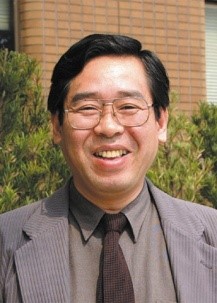
Mathematical analysis for nonlinear partial differential equations arising in gas dynamics, fluid mechanics, elastodynamics, and plasma physics.
- (1) S. Kawashima and W.-A. Yong, Dissipative structure and entropy for hyperbolic systems of balance laws, Arch. Rational Mech. Anal., 174 (2004), 345-364.
- (2) S. Kawashima, T. Nakamura, S. Nishibata and P. Zhu, Stationary waves to viscous heat-conductive gases in half space: Existence, stability and convergence rate, Math. Models Meth. Appl. Sci., 20 (2010), 2201-2235.
- (3) Y. Ueda and S. Kawashima, Decay property of regularity-loss type for the Euler-Maxwell system, Methods and Applications of Analysis, 18 (2011), 245-268.
- (4) J. Xu and S. Kawashima, Global classical solutions for partially dissipative hyperbolic systems of balance laws, Arch. Rational Mech. Anal., 211 (2014), 513-553.
- (5) M. Okada and S. Kawashima, Global solutions to the equation of thermoelasticity with fading memory, J. Diff. Equations, 263 (2017), 338-364.
- Modelling and mathematical analysis for systems of complex fluids
- Dissipative structure for systems with memory
- Mathematical analysis for hyperbolic-parabolic systems of conservation laws with non-symmetric diffusion
- Mathematical analysis for structure-preserving difference schemes
My research is on strategies and processes of value creation. I study how companies and people may generate value by competing and cooperating with each other, with limited resources. I take various approaches such as network science, big data analysis, machine learning, mathematical modeling, and so on. Recent research topics include resilience of supply chains against natural disasters and economic stagnation, firms’ diversification strategies and their survivability, quantification of potential future values of start-ups, prediction of M&A and investments, and measuring /modeling teamwork performance within organizations.
- (1) T. Kito, N. Moriya, J. Yamanoi: “Inter-organisational patent opposition network: how companies form adversarial relationships,” The Japanese Economic Review, 72, 145-166, 2021.
- (2) T. Kito, S. New and F. Reed-Tsochas, Disentangling the complexity of sully relationship formations: Firm product diversification and product ubiquity in the Japanese car industry, Int. J. Prod. Econ., 206, 159-168, 2018.
- (3) T. Kito and T. Ogata, Firms’ strategies and patterns of their interdependencies: An emergent synthesis perspective, Procedia CIRP, 62, 68-73, 2017.
- (4) T. Kito, S. New and K. Ueda, How automobile parts supply structures may reflect the diversity of product characteristics and suppliers’ production strategies, CIRP Ann. Manuf. Technol., 64(1), 423-426, 2015.
- (5) T. Kito and K. Ueda, The implication of automobile parts supply network structures: A complex network approach, CIRP Ann. Manuf. Technol., 63(1), 393-396, 2014.
- Design of an integrated index for companies’ diversification strategies and prediction of companies’ survivability
- Analysis of business data via network science approaches for value assessment of intangible assets (e.g. branding strategies, patents, uniqueness,…)
- Agent-based simulation of the Circular Economy for sustainable future
- Modeling and data analysis of business idea generation process
My research area is the nonlinear partial differential equations. Among other things, I put effort into analysis for spatiotemporal patterns and the global structure of steady-state solutions to reaction-diffusion systems arising in biological models. For example, I study the effect of nonlinear diffusion terms on the bifurcation branch of the set of steady-state solutions to the Lotka-Volterra system. By the analysis for partial differential equations arising in mathematical models, My aim of research is to derive not only the mathematical understandings for the mechanism of biological phenomena but also analytical procedures for nonlinear diffusion terms, e.g., the cross-diffusion term.
- (1) K.Kuto, T.Mori, T.Tsujikawa and S.Yotsutani, Global solution branches for a nonlocal Allen-Cahn equation, J. Differential Equations 264 (2018), 5928- 5949.
- (2) K.Kuto, H.Matsuzawa and R.Peng, Concentration profile of endemic equilibrium of a reaction-diffuision-advection SIS epidemic model, Calc. Var. Partial Differential Equations 56 (2017), Article Number 112 (28 pages).
- (3) K.Kuto, Limiting structure of shrinking solutios to the stationary Shigesada-Kawasaki-Teramoto model with large cross-diffusion , SIAM J. Math. Anal. 47 (2015), 3993-4024.
- (4) K.Kuto and T.Tsujikawa, T., Stationary patterns for an adsorbate- induced phase transition model: II. Shadow system , Nonlinearity 26 (2013), 1313-1343.
- (5) K.Kuto and Y.Yamada, Multiple coexistence states for a prey-predator system with cross-diffusion, J. Differential Equations 197 (2004), 315-348.
- Cross-diffusion limit in the Shigesada-Kawasaki-Teramoto model
- Lotka-Volterra system with nonlinear diffusion of an attractive transition type
- Allen-Cahn-Nagumo equation and Lotka Volterra system with nonlocal terms
- Bifurcation from infinity in reaction-diffusion systems
My research area is differential geometry, interpreted widely. Recently I have been focusing on problems related to quantum cohomology and integrable systems, in particular the role of harmonic maps in tt*-geometry (topological-antitopological fusion). This area began with symplectic topology (Floer cohomology and quantum cohomology), then developed into differential geometry (quantum differential equations, special geometry, pluriharmonic maps) and the theory of integrable systems (families of flat connections, integrable hierarchies). Many of the concepts and problems emerged recently from physics, but they provide challenging problems across a wide area of mathematics. My interest in this area was strongly influenced by my earlier work in algebraic and differential topology, and differential geometry. In particular I studied the topology of spaces of rational curves in homogeneous Kaehler manifolds and toric varieties, and the differential geometry of harmonic maps from surfaces to Lie groups and symmetric spaces. Loop groups and their infinite-dimensional Grassmannian models played a role in much of this work, and continue to be an essential tool in my current research.
- (1) Topological-antitopological fusion and the quantum cohomology of Grassmannians. Jpn. J. Math. 16 (2021) 155-183
- (2) Isomonodromy aspects of the tt* equations of Cecotti and Vafa III. Iwasawa factorization and asymptotics, with A. R. Its, and C.-S. Lin, Commun. Math. Phys., 374 (2020) 923-973
- (3) Kostant, Steinberg, and the Stokes matrices of the tt*-Toda equations, with Nan-Kuo Ho, Selecta Math., 2019
- (4) Painleve III: A Case Study in the Geometry of Meromorphic Connections, with C. Hertling, Lecture Notes in Mathematics 2198, Springer, 2017 (book)
- (5) Isomonodromy aspects of the tt* equations of Cecotti and Vafa II. Riemann-Hilbert problem, with A. R. Its, and C.-S. Lin, Commun. Math. Phys. 336 (2015) 337-380
I am studying Lie-theoretic and symplectic properties of moduli spaces of solutions of the tt*-Toda equations. This a nonlinear p.d.e. which is important in geometry (harmonic maps) and supersymmetric quantum field theory (quantum cohomology), closely related to systems of o.d.e. of Painleve type. I am also interested in numerical simulation of solutions, in order to understand their singularities.
I am interested in the topology of 3-manifolds. This theme has been interacting with many other fields including non-mathematical areas and lots of active researches are developing nowadays. Among them, I am studying the topology of 3-manifolds especially based on hyperbolic geometric viewpoints.
- (1) S. Kojima and G. McShane, Normalized entropy versus volume for pseudo-Anosovs, Topol & Geom., 22 (2018), 2403-2462.
- (2) S. Kojima, E. Kin and M. Takasawa, Entropy versus volume for pseud-Anosovs, Experimental Math., 18 (2009), 387-407.
- (3) S. Kojima, S. Mizushima and S. P. Tan, Circle packings on surfaces with projective structures, J. Differential Geom., 63 (2003), 349-397.
- (4) S. Kojima, H. Nishi and Y. Yamashita, Configuration spaces of points on the circle and hyperbolic Dehn fillings, Topology, 38 (1999), 497-516.
- (5) S. Kojima, Deformations of hyperbolic 3-cone-manifolds, J. Differential Geom., 49 (1998), 469-516.
Recently, many topological invariants for low dimensional manifolds have been discovered. In light of this situation, we introduced quasi-isometric relation between invariants and have tried to study them. We continue to do this in 2021 too.
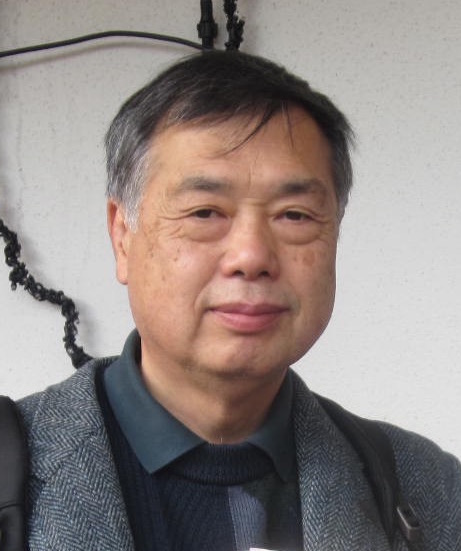
Geometry topology of wild space. Wild space has pathological complexity and is a cliff wall for mathematicians. We investigate topology of them by using the keyword ''dimension''. The main theme is to study of dimensional properties of the Cantor group on compact metric spaces. The subject is mostly motivated by a classical problem about actions of p-adic integers on topological manifolds. We focus on problems discovering relation between dimension of the orbit space and one of a space on which the Cantor group acts. Mail tools of our research are cohomological dimension and extension dimension. In addition, we start to study topological data analysis by using methods which we developed and improved on the way of studying above subjects.
- (1) A. Koyama, J. Krasinkiewicz and S. Spiez, Surfaces in products of two curves. Topology Appl. 196 (2015), 618–640.
- (2) A. Koyama, J. Krasinkiewicz and S. Spiez, Embeddings into products and symmetric products—an algebraic approach. Houston J. Math. 38 (2012), no. 2,611–641.
- (3) A. Koyama, J. Krasinkiewicz and S. Spiez, Generalized manifolds in products of curves. Trans. Amer. Math. Soc. 363 (2011), no. 3, 1509–1532.
- (4) Cuchillo-Ibanez, J. Dydak, A. Koyama and Manulo Moron, CCCC_0-coarse geometry of complements of Z-sets in the Hilbert cube. Trans. Amer. Math. Soc. 360 (2008), no. 10, 5229–5246.
- (5) A. Koyama and K. Yokoi, Cohomological dimension and acyclic resolutions. Topology Appl. 120 (2002), no. 1-2, 175–204.
The mathematical model of thermal fluid energy conversion system is constructed and its steady and unsteady state conditions are analyzed based on the circuit theory. With this result, optimum design and control of the actual system such as the heat pump are realized. Furthermore, unified analysis theory that can be applied to the electric, thermal fluid and mechanical systems is developed, and with this theory, the macro energy system analysis is carried out to realize optimum configuration and operation of the total energy conversion system.
- (1) Niccoló Giannetti, Arnas, Andrea Rocchetti, and Kiyoshi Saito, "Thermodynamic Analysis of Irreversible Heat-transformers", Makara J. Technol. Vol. 19, No.2(2015)pp.90-96.
- (2) Niccoló Giannetti, Andrea Rocchetti, Arnas Lubis, Kiyoshi Saito, Seiichi Yamaguchi, "Entropy parameters for falling film absorber optimization", Applied Thermal Engineering Volume 93(2015)pp.750-762.
- (3) Niccoló Giannetti, Andrea Rocchetti, Kiyoshi Saito, Seiichi Yamaguchi, "Entropy parameters for desiccant wheel design", Applied Thermal Engineering Volume 75(2015)pp.826-838.
- (4) Niccoló Giannetti, Andrea Rocchetti, Kiyoshi Saito, Seiichi Yamaguchi, "Irreversibility analysis of falling film absorption over a cooled horizontal tube", International Journal of Heat and Mass Transfer Volume 88 (2015) pp.755-765.
- (5) S. Yamaguchi,D. Kato,K. Saito,S. Kawai, “Development and validation of static simulation model for CO2 heat pump”, International Journal of Heat and Mass Transfer,54 (9-10) (2011) pp.1896-1906.
- To evaluate the energy saving of actual system by utilizing next generation refrigerant, experiment and analysis method by AI technologies are introduced regarding mixture refrigerants, and discussed for the correlation among refrigerant charge amount, heat exchanger performance and system operation.
- It is discussed for optimum design to maximize heat and mass transfer in condition of the least volume of the contactors based on the wettability, heat and mass transfer phenomena in 3 fluids contactors of liquid a desiccant air-conditioning system.
If we think of a living system as an integrated circuit, what corresponds to the circuit element is a protein molecule. A protein molecule can process and transmit physical information and can exert mechanical work as a molecular machine. Protein molecules are dynamically interacting with each other, forming a biomolecular circuit in water. We are conducting large-scale simulation of a system composed of biomolecules and waters to elucidate the physical mechanism of molecular machines that have acquired ingenious functionality via evolution, utilizing the latest computer technology and powerful methods in the computational and statistical physics.
- (1) T. Sato, T. Sasaki, J. Ohnuki, K. Umezawa, and M. Takano, "Hydrophobic surface enhances electrostatic interaction in water", Phys. Rev. Lett., 121, 206002 (2018).
- (2) J. Ohnuki, T. Sato, and M. Takano, "Piezoelectric allostery of proteins", Phys. Rev. E, 94, 012406 (2016).
- (3) T. Sato, J. Ohnuki, and M. Takano, "Dielectric allostery of protein: response of myosin to ATP binding", J. Phys. Chem. B, 120, 13047-13055 (2016).
- (4) K. Okazaki, T. Sato, and M. Takano, "Temperature-enhanced association of proteins due to electrostatic interaction: A coarse-grained simulation of actin-myosin binding", J. Am. Chem. Soc., 134, 8918-8925 (2012).
- (5) M. Takano, T. P. Terada, and M. Sasai, "Unidirectional Brownian motion observed in an in silico single molecule experiment of an actomyosin motor", Proc. Natl. Acad. Sci. USA, 107, 7769-7774 (2010).
By applying the techniques of computational physics (molecular dynamics simulations, electrostatic potential calculations, and free-energy calculations, etc.) to a wide range of molecular machines involved in force generation, energy conversion, electron-transfer regulation, and polymer synthesis, we investigate the mechanism of each molecular machine and a common Coulomb-based principle. We study the physical modeling of the intermolecular interactions for large molecular systems and develop the method for analyzing allosteric pathways in the light of the dielectric allostery and the piezoelectric allostery.
We have targeted a number of key technology areas of the 21st century where we expect to make a significant impact with the high-power fluid–structure interaction (FSI) modeling techniques we have been developing. These areas are biotechnology, space and energy. We recognize that in these targeted areas FSI modeling will play a crucial role in advancing the technology with reliable computational analysis, performance evaluation, correlation studies, and bringing new solutions and new designs. Our research objective is to play that role. This will require addressing even more computational challenges than the many that we have already successfully addressed. Creative development of new modeling techniques needed to address those additional challenges is also our research objective.
- (1) Y. Bazilevs, K. Takizawa, and T.E. Tezduyar, “Computational Fluid–Structure Interaction: Methods and Applications”, Wiley (2013), Print ISBN: 9780470978771, DOI: 10.1002/9781118483565
- (2) K. Takizawa, T.E. Tezduyar, T. Terahara, and T. Sasaki, “Heart valve flow computation with the integrated Space–Time VMS, Slip Interface, Topology Change and Isogeometric Discretization methods”, Computers & Fluids, published online, DOI: 10.1016/j.compfluid.2016.11.012 (2016)
- (3) K. Takizawa, Computational engineering analysis with the new-generation space–time methods”, Computational Mechanics, 54 (2014) 193–211, DOI: 10.1007/s00466-014-0999-z
- (4) K. Takizawa, Y. Bazilevs, T.E. Tezduyar, C.C. Long, A.L. Marsden, and K. Schjodt, “ST and ALE-VMS methods for patient-specific cardiovascular fluid mechanics modeling”, Mathematical Models and Methods in Applied Sciences, 24 (2014) 2437–2486, DOI: 10.1142/S0218202514500250
- (5) K. Takizawa and T.E. Tezduyar, “Computational methods for parachute fluid–structure interactions”, Archives of Computational Methods in Engineering, 19 (2012) 125–169, DOI: 10.1007/s11831-012-9070-4
Issues related to the fundamental aspects of quantum theory are studied, examples of which include quantum dynamics of open quantum systems that describes loss of quantum coherence (decoherence) and/or dissipative processes, measurement and control of quantum systems, physical quantities characterizing quantum states and their measurement, and quantum mechanical scattering processes viewed within the framework of quantum field theory.
- (1) Analytically solvable Hamiltonians for quantum two-level systems and their dynamics A. Messinaand H. Nakazato J. Phys. A: Math. Theor. 47 (2014, November) 445302 (10 pages)
- (2) Measurement of purity, the simplest nonlinear functional of the density matrix T. Tanaka and H. Nakazato Open Systems & Information Dynamics 21 No.1&2 (2014, February) 1440009 (27pages)
- (3) Entanglement generation by qubit scattering in three dimensions Y. Hida, H. Nakazato, K. Yuasa and Y. Omar Phys. Rev. A. 80 No.1 (2009, July) 012310 (18 pages)
- (4) Purification through Zeno-like measurements H. Nakazato, T. Takazawa and K. Yuasa Phys. Rev. Lett. 90 No.6 (2003, February) 060401 (4 pages)
- (5) Solvable dynamical model for a quantum measurement process H. Nakazato and S. Pascazio Phys. Rev. Lett. 70 No.1 (1993, January) 1-4
- Proposal of analytically solvable quantum two-level models and its application to fundamental issues of quantum mechanics: Quantum two-level systems are the simplest quantum systems and play very important roles as qubit systems in the field of quantum information, but their dynamics is not easily solved analytically if the system is subject to time-dependent external fields and analytical solutions can be found only for very limited cases. On the basis of our scheme proposed recently, we try to construct new analytically solvable models, and use such solutions to revisit and/or refine some of fundamental notions in quantum mechanics.
- Reconsideration of Baker-Campbell-Hausdorff (BCH) formula: The BCH formula is a well-known and useful tool to give a generator for a unitary operator cporresponding to a product of two unitary operators generated by different noncommutable generators. Its validity, however, is only proved under some conditions and it is shown very recently that when the generators form a noncompact algebra, one would need an extra piece not reproducible by the BCH formula in the generator. The investigation will be continued and deepened and we try to find a physical system where such a deviation can be detected experimentally.
- Controllability under dissipative environment: When a quantum system controlled by external fields is in contact with the outside world (environment), how is its controllability affected by the latter? In order to answer this question, to understand the dissipative dynamics of time-dependent systems is necessary. We will try to derive a master equation that describes such a dynamics and examine its consequence.
We are conducting theoretical research on the fundamental aspects of quantum mechanics and quantum information, exploring interesting and attractive quantum worlds, and pursuing future quantum technologies.
- (1) Daniel Burgarth, Paolo Facchi, Hiromichi Nakazato, Saverio Pascazio, and Kazuya Yuasa, "Kolmogorov-Arnold-Moser Stability for Conserved Quantities in Finite-Dimensional Quantum Systems," Physical Review Letters 126, 150401 (2021).
- (2) Daniel Burgarth, Paolo Facchi, Hiromichi Nakazato, Saverio Pascazio, and Kazuya Yuasa, "Quantum Zeno Dynamics from General Quantum Operations," Quantum 4, 289 (2020).
- (3) Daniel Burgarth, Paolo Facchi, Vittorio Giovannetti, Hiromichi Nakazato, Saverio Pascazio, and Kazuya Yuasa, "Exponential Rise of Dynamical Complexity in Quantum Computing through Projections," Nature Communications 5, 5173 (2014).
- (4) Daniel Burgarth and Kazuya Yuasa, "Quantum System Identification," Physical Review Letters 108, 080502 (2012).
- (5) Hiromichi Nakazato, Tomoko Takazawa, and Kazuya Yuasa, "Purification through Zeno-like Measurements," Physical Review Letters 90, 060401 (2003).
- We will pursue the "quantum metrology" as a possible future quantum technology.
- We will study "quantum control" for quantum information processing, in particular via quantum measurements.
- We will study several issues on the foundations of statistical mechanics, including nonequilibrium systems, on the basis of the "quantum typicality" of large quantum systems.
My research topics are mainly concerned with Dirac geometry and its applications to mechanics and physics. In particular, I have developed Dirac reduction for nonholonomic systems on manifolds on which Lie groups act and the associated variational structures, together with the applications to multibody systems, multiphase flows, viscous fluids with reaction and diffusions, classical field theories such as electromagnetisms, variational integrators. Furthermore, invariant manifold structures of Rayleigh-Benard convection and the restricted four body problems, stochastic variational formalisms for meso-fluids and molecular dynamics are also studied.
- (1) Francois Gay-Balmaz and Hiroaki Yoshimura, Dirac reduction for nonholonomic mechanical systems and semidirect products, Advances in Applied Mathematics, Vol.63, pp.131-213, 2015.
- (2) Vankerschaver, Hiroaki Yoshimura and Melvin Leok, The Hamilton-Pontryagin Principle and multi-Dirac structures for classical field theories, Journal of Mathematical Physics, Vol. 53, 072903, 2012.
- (3) Hiroaki Yoshimura and Jerrold E. Marsden, Dirac cotangent bundle reduction, Journal of Geometric Mechanics, Vol.1, No.1, pp.87-158, 2009.
- (4) Hiroaki Yoshimura and Jerrold E. Marsden, Reduction of Dirac Structures and the Hamilton- Pontryagin Principle, Report on Mathematical Physics, Vol.60, pp.381-426, 2007.
- (5) Hiroaki Yoshimura and Jerrold E. Marsden, Dirac Structures in Lagrangian Mechanics: Part I and Part II, Journal of Geometry and Physics, Vol.56, pp. 1-24, pp. 25-66, 2006.
We will study the symmetry reduction of an induced Dirac structure on the tangent bundle over a Lie group and will also investigate the Lagrange-Dirac system over the Lie algebra in the context of the Euler-Poincaré reduction. We will explore the Dirac geometry and its associated variational formulation of open nonequilibrium thermodynamics in the context of nonlinear and nonholonomic systems. Furthermore, we will study the Lagrangian transport associated with the chaotic mixing in the perturbed Rayleigh-Bernard convection and we will make numerical analysis on unsteady behaviors of cavitation clouds and the associated shock wave phenomena.
Researcher Profile
I focus on the efficiency enhancement by heat transfer and energy conversion in refrigeration and air-conditioning fields. The details of research activities are as follows.
- Efficient control method and optimization of single and double effect combined system.
- Refrigerant distribution in microchannel heat exchanger having headers.
- Characteristic analysis of heat transportation system by CO2 natural and forced circulation for refrigerant rack spot cooling.
- Heat transfer enhancement of indirect evaporative cooler.
- Miniaturization of CO2 heat pump using microchannel heat exchanger.
- Performance analysis of desiccant dehumidification systems driven by low-grade heat source.
- Performance analysis hybrid refrigerator (combination of gas engine, compression and absorption type refrigerator).
- Optimum system and operation for smart energy house.
- (1) Jongsoo Jeong, Arnas Lubis, Kiyoshi Saito, Sarngwoo Karng, Seoyoung Kim, Kwangho Kim, Start-up behaviour of a combined air-conditioning system in cooling and heating operating modes, Energy and Buildings, Volume 158, 1346-1357 (2018)
- (2) Arnas Lubis, Jongsoo Jeong, Niccolo Giannetti, Seiichi Yamaguchi, Kiyoshi Saito, Hajime Yabase, Muhammad I. Alhamid, Nasruddin, Operation performance enhancement of single-double-effect absorption chiller, Applied Energy, Volume 219, 299-311 (2018)
- (3) Jongsoo Jeong, Kiyoshi Saito, Sarngwoo Karng, Seoyoung Kim, Kwangho Kim, Transient operation characteristics and control method in combined air-conditioning systems, Science and Technology for the Built Environment, Volume 23, Issue 4, 567-581 (2017)
- (4) Arnas Lubis, Jongsoo Jeong, Kiyoshi Saito, Niccolo Giannetti, Hajime Yabase, Muhammad Idrus Alhamid, Nasruddin, Solar-assisted single-double-effect absorption chiller for use in Asian tropical climates, Renewable Energy, Volume 99, 825-835 (2016)
- (5) Jongsoo Jeong, Seiichi Yamaguchi, Kiyoshi Saito, Sunao Kawai. Performance Analysis of Desiccant Dehumidification Systems Driven by Low-Grade Heat Source. International journal of refrigeration, a Volume 34, Issue 4, Pages 928-945 (2011)
- More uniform flow distribution is being aimed at, where the RSD should approach zero at a wide range of operating conditions.
- 1.1 Effect of inside head structure for spiral type of header on flow uniform distribution toward each microchannel
- 1.2 Visualization investigation of flow distribution in the inside of spiral type of header
- Investigation of steady and unsteady hydrogen flow characteristics inside solenoid valve during charging and discharging of hydrogen by computational fluid dynamics approach
- 2.1 Three-dimensional simulation to characterize the complex flow inside the solenoid valve at different valve openings and operation conditions by steady and unsteady states
- 2.2 Diagnosis of the flow-induced noise generated during the charging and using process at different valve openings and operation conditions by steady and unsteady states
- 2.3 Validation of computation results and the experimental data that is obtained from the HTS noise measurement test conducted in our facility.
- Construction of simulation codes that can easily analyze the annual introduction effect of heat pumps consisting of various refrigerants and cycles
- 3.1 Development of integrated industrial energy simulator that analyzes the performance of heat pump system used in industrial processes.
- 3.2 Steady and unsteady state simulation of heat pump system with calculation core including pumps, tanks, valves, etc.
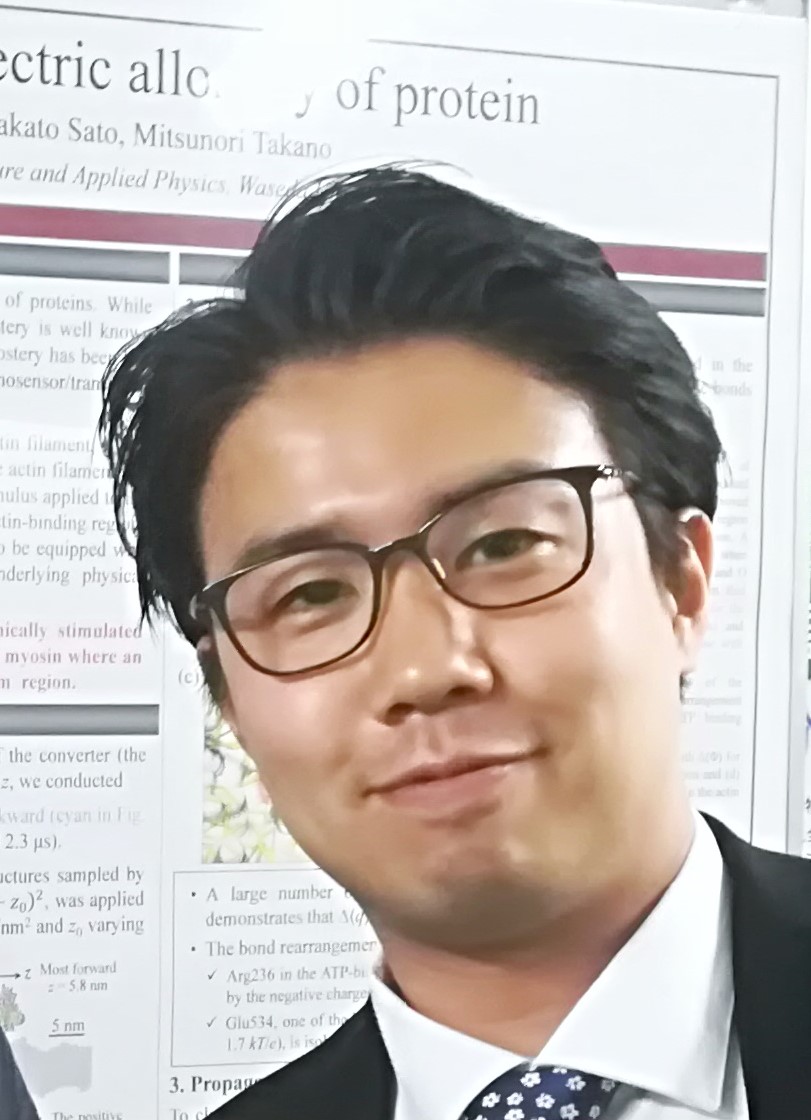
Our purpose is to clarify how protein works as a molecular machine. To this end, we investigate the physical properties (particularly dielectricity and piezoelectricity) of protein and the physical mechanism by which protein realizes the input-output signal conversion and the long-range spatial (and temporal) correlation within the molecule, which is called "allostery", by using computational physics approach such as molecular dynamics, the Poisson equation, and digital annealing technique.
- (1) J. Ohnuki, A. Yodogawa, and M. Takano, "Electrostatic balance between global repulsion and local attraction in reentrant polymerization of actin", Cytoskeleton, 74, 504-511 (2017).
- (2) J. Ohnuki, T. Sato, and M. Takano, "Piezoelectric allostery of proteins", Phys. Rev. E, 94, 012406 (2016).
- We study the mechanism of actin depolymerization and its regulation from the viewpoint of dielectric and piezoelectric allostery.
- We study the mechanism of proton conductance in a light-gated channel protein.
- We establish the search method for allosteric pathway by combining the GPU-accelerated molecular dynamics technique and the combinatorial optimization technique by using Ising-like Hamiltonian. We further apply this method to study the mechanism of the allosteric response of myosin to a heart-failure drug.
Involved in the development of highly generalizable and accurate physical models of interfacial transport phenomena recurrent in thermal systems through the interdisciplinary effort of mathematics, physics and engineering. Targeting the development of advanced semi-theoretical models as a solid background to investigate new solutions for a rapidly changing field.
Also working on: energy storage systems; systems using natural refrigerants; sorption systems; cascade refrigeration systems; turbomachinery;
- (1) Niccolo Giannetti, Seiichi Yamaguchi, Kiyoshi Saito, Numerical simulation of Marangoni convection within absorptive aqueous Li-Br, International Journal of Refrigeration, 92, 176 -184, Aug 2018.
- (2) Niccolo Giannetti, Seiichi Yamaguchi, Kiyoshi Saito, Simplified expressions of the transfer coefficients on a partially wet absorber tube, International Journal of Refrigeration, in press, Jul 2018.
- (3) Giannetti N, Varela R.J, Ariyadi H, Yamaguchi S, Saito K, Wang X.-M, Nakayama H., Semitheoretical Prediction of the Wetting Characteristics of Aqueous Ionic Liquid Solution on an Aluminum Finned-Tube Desiccant Contactor, Journal of Fluids Engineering, Transactions of the ASME, 140(12), 2018.
- (4) Giannetti N, Kunita D, Yamaguchi S, Saito K., Annular flow stability within small-sized channels, International Journal of Heat and Mass Transfer, 116, 1153-1162, 2018.
- (5) Giannetti N, Rocchetti A, Yamaguchi S, Saito K., Analytical solution of film mass-transfer on a partially wetted absorber tube, International Journal of Thermal Sciences, 118, 176-186, 2017.
- (6) Giannetti N, Yamaguchi S, Saito K., Wetting behavior of a liquid film on an internally-cooled desiccant contactor, International Journal of Heat and Mass Transfer, 101, 958-969, 2016.
The developed non-equilibrium formulation of transport phenomena will be extended to the characterization of two-phase flow separation and Marangoni convection, finally providing corresponding experimental validations. Focus will be directed to the dynamic behaviour and hysteresis characteristics inherent to these phenomena. To this aim, the above-mentioned formulation is used as the basis for a variational representation which extends the classical Lagrangian formulation in mechanics to nonequilibrium thermodynamic systems including irreversible processes.
My research mainly focuses on nonlinear partial differential equations describing the motion of viscous fluids. I am interested in the application of some abstract functional analysis and harmonic analysis.
- (1) K. Watanabe, Strong solutions to compressible--incompressible two-phase flows with phase transitions, Nonlinear Anal. Real World Appl. 54 (2020), 103101.
- (2) P. Tolksdorf and K. Watanabe, The Navier--Stokes equations in exterior Lipschitz domains: Lp-theory, J. Differential Equations 269 (2020), 5765-5801.
Stability of the stationary solutions of the free boundary problems of the Navier-Stokes equations with surface tension
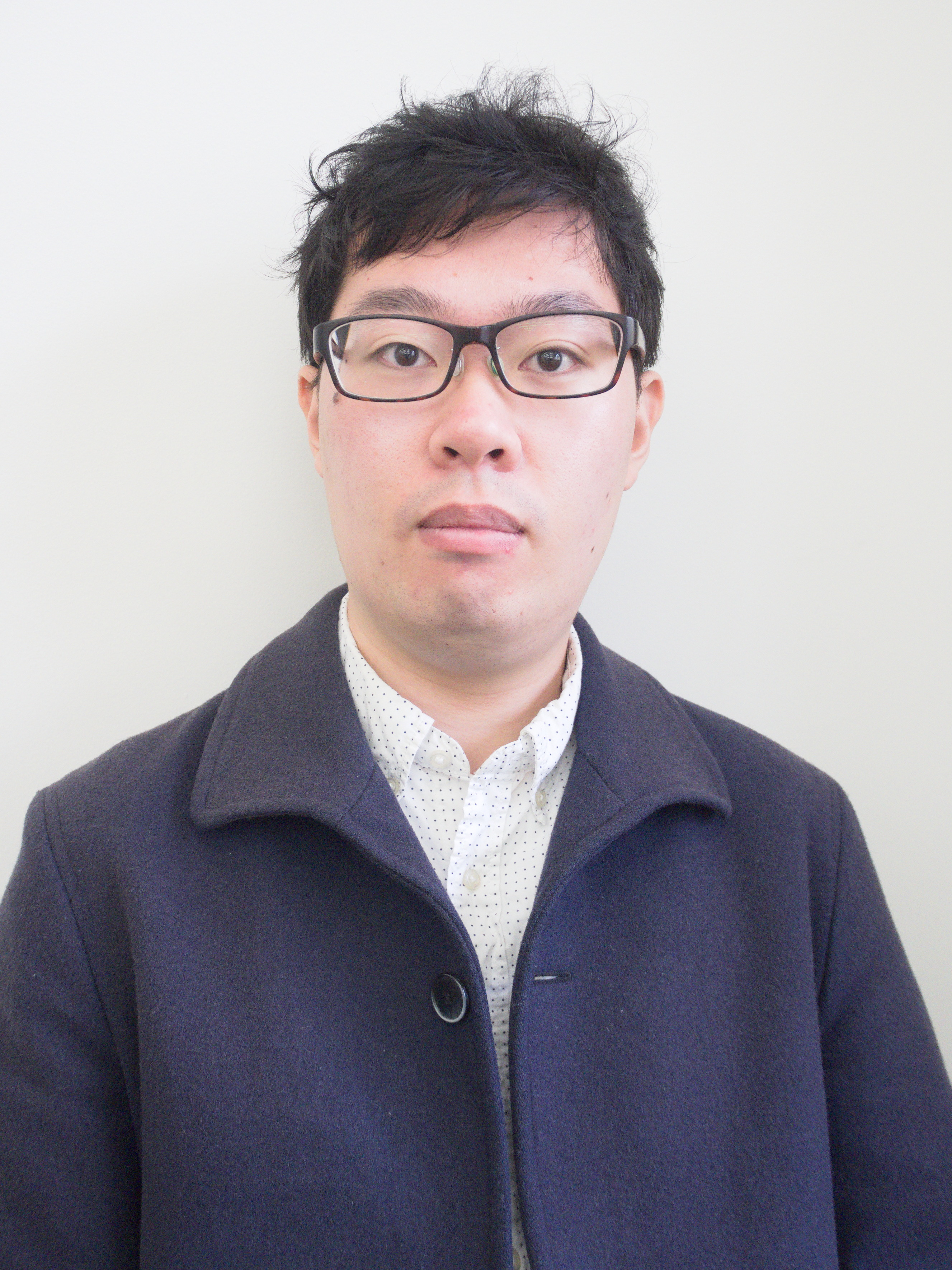
My research field is numerical analysis of partial differential equations. Recently I am interested in the development and theoretical analysis of discretization methods which are based on the finite element method and Isogeometric analysis (IGA).
- (1) Y. Giga and Y. Ueda, Numerical computations of split Bregman method for fourth order total variation flow. Journal of Computational Physics, Vol. 405 (2020).
- (2) Y. Ueda and N. Saito, Stability and error estimates for the successive-projection technique with B-splines in time. Journal of Computational and Applied Mathematics, Vol. 358 (2019)
- (3) Y. Ueda and N. Saito, The inf-sup condition and error estimates of the Nitsche method for evolutionary diffusion-advection-reaction equations. Japan Journal of Industrial and Applied Mathematics, Vol. 36, Issue 1 (2019).
- Mathematical analysis for the parameter choice in stabilization for fluid problem


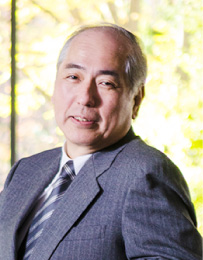
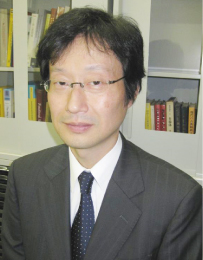
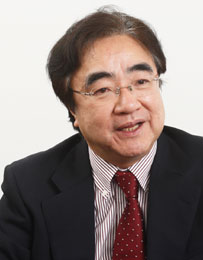
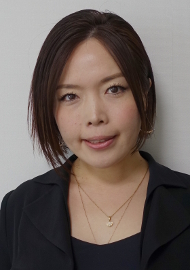
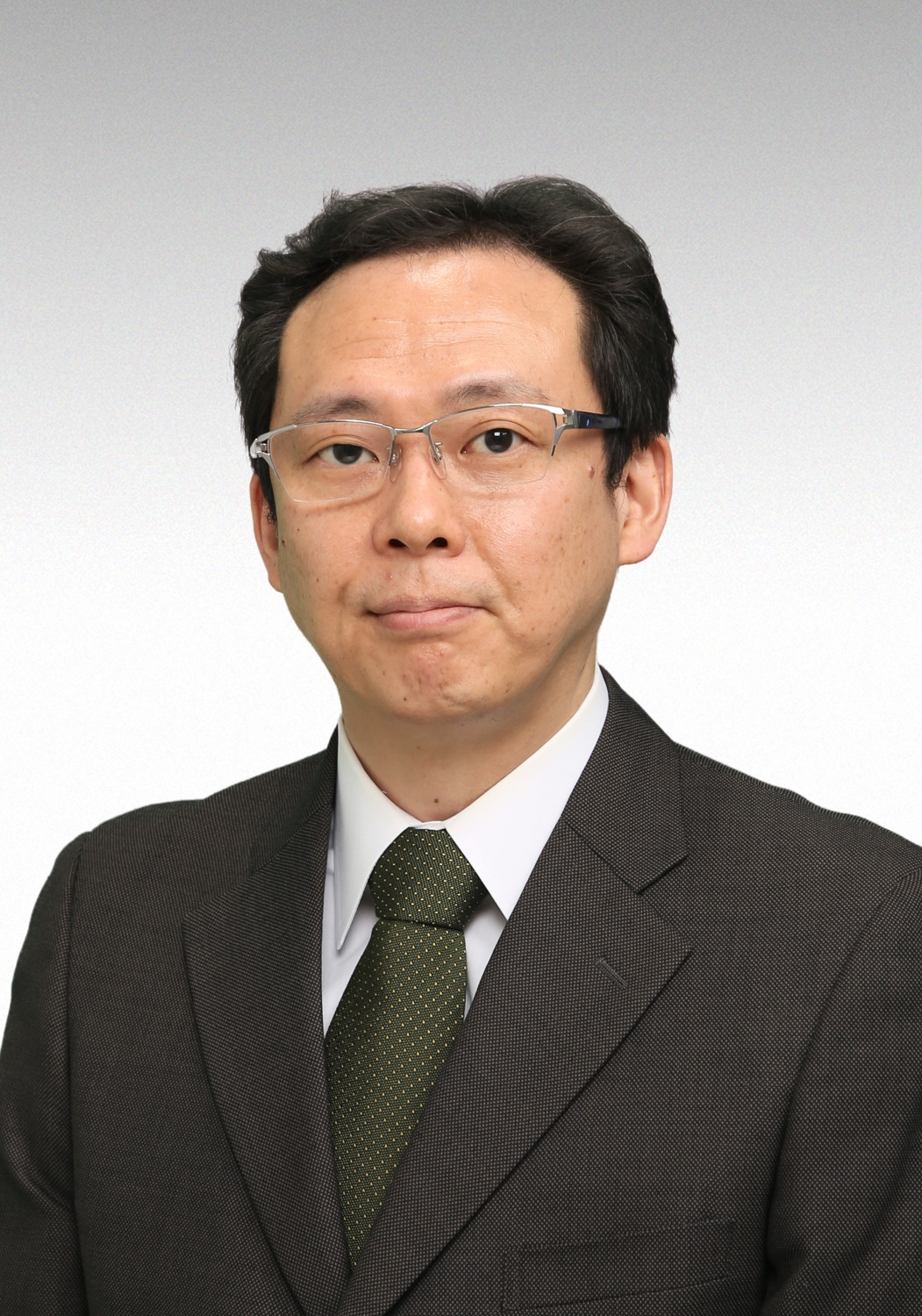
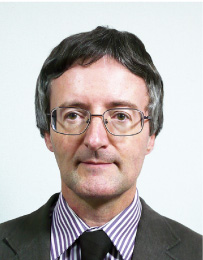
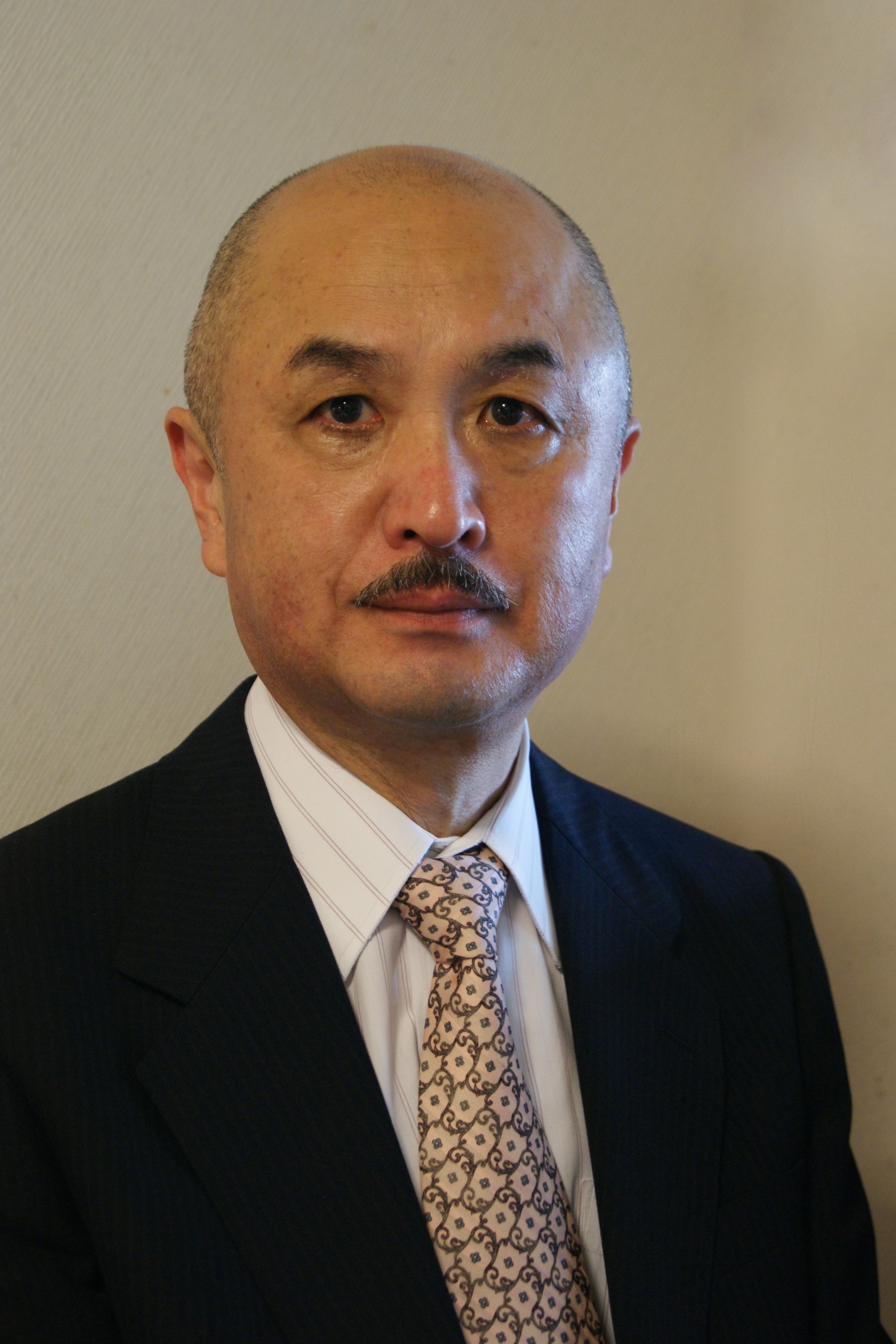
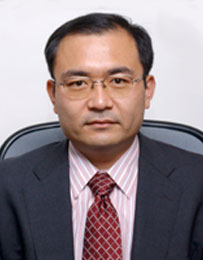
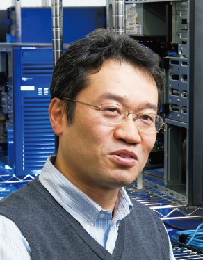
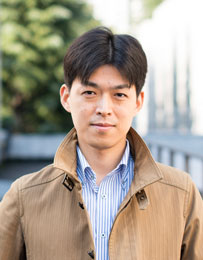
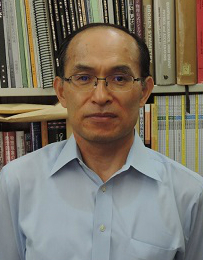
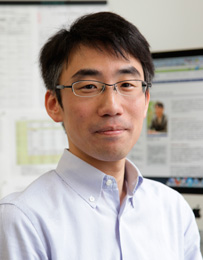
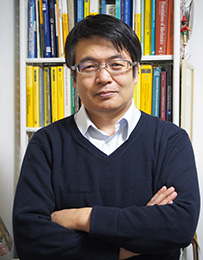
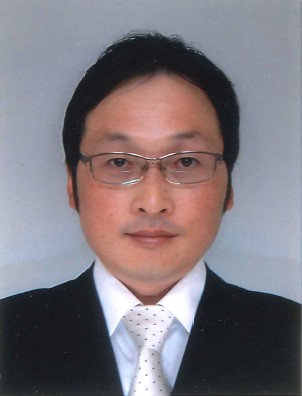 >
>